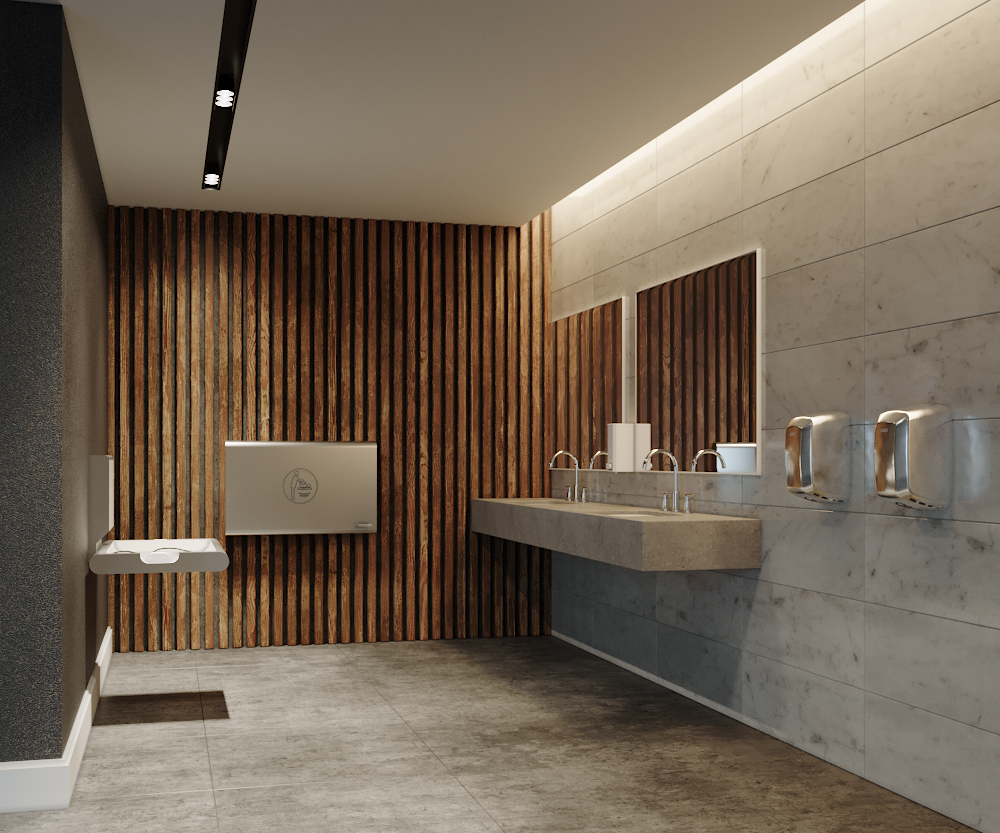Are Baby Changing Stations Required by Code?
Posted by ProDryers on Jun 4th 2024
The Necessity of Convenience: Baby Changing Stations in Commercial Restrooms
Parents on the go know the struggle: a fussy baby and a sudden pit stop requiring a diaper change. While restrooms are a necessity, navigating them with a squirmy infant can be a challenge. This is where baby changing stations come in, offering a safe and convenient space for diaper changes. But are these stations required by law, or are they simply a customer courtesy?
The Call for Convenience:
Baby changing stations are not federally mandated in the United States. However, the Americans with Disabilities Act (ADA) does have guidelines for these amenities if a business chooses to install them. These guidelines ensure accessibility for parents with disabilities, focusing on aspects like mounting height and clear floor space.
The Bathroom Accessible in Every Situation (BABIES) Act of 2016 requires all federal buildings to have baby changing stations in both men's and women's restrooms. While not a national law, this act highlights the growing recognition of the need for baby changing facilities in public spaces.
Beyond the Law: A Customer Experience Advantage
Safety First: CPSIA and Baby Changing Stations
While not mandated by law, installing baby changing stations demonstrates a commitment to child safety. The Consumer Product Safety Improvement Act (CPSIA) establishes safety standards for various children's products, including durable infant or toddler products. Baby changing stations would fall under this category. The CPSIA ensures these products are rigorously tested for stability, structural integrity, and the absence of harmful substances like lead. Businesses that choose to install baby changing stations can gain peace of mind knowing they're providing a safe space for parents and their children, adhering to these important safety guidelines.
Even without a legal mandate, installing baby changing stations offers several advantages for businesses:
- Enhanced Customer Satisfaction: Parents with young children appreciate the convenience and consideration. A positive experience can lead to repeat visits and positive word-of-mouth promotion.
- Increased Foot Traffic: Catering to families with young children can attract a broader customer base.
- Improved Brand Image: Providing family-friendly amenities demonstrates a commitment to inclusivity and customer care.

Choosing the Right Station:
Baby changing stations come in various options to suit different restroom layouts and budgets. Here are some factors to consider:
- Wall-mounted vs. Horizontal: Wall-mounted stations save floor space, while horizontal models offer a more comfortable changing surface.
- Durability and Easy Cleaning: Opt for stations made from easy-to-clean, antimicrobial materials for hygiene.
- ADA Compliance: If you choose to install a station, ensure it meets ADA guidelines for accessibility.
Conclusion:
Baby changing stations in commercial restrooms are not just a legal requirement, but a thoughtful customer service amenity. By providing a convenient space for diaper changes, businesses can enhance customer experience, attract families, and build a positive brand image. So, the next time you're planning a restroom renovation, consider incorporating a baby changing station – it might be a small addition that makes a big difference for parents on the go.
